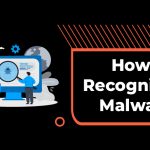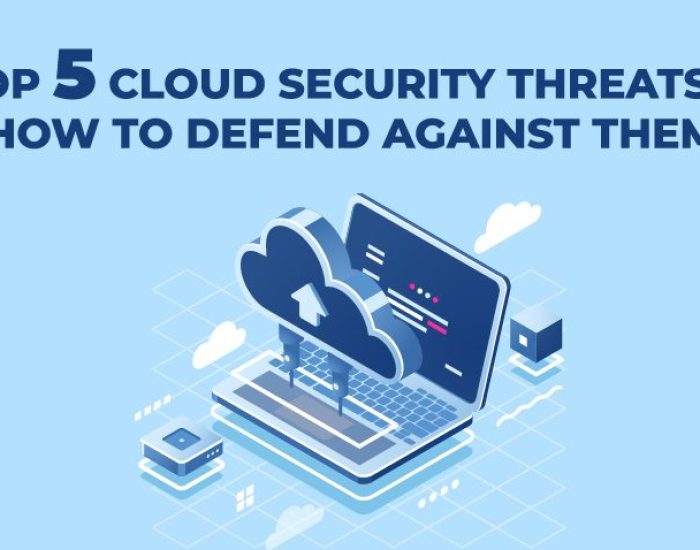Understanding Cyber Attacks in The Cloud
In today’s world of rapidly advancing technology, the need for understanding cyber-attacks in the cloud is paramount. Cloud computing has revolutionized how we store and access data, allowing faster and more efficient workflows and collaborations. However, it has also created a new avenue for cybercriminals, who can target cloud-based systems with sophisticated attacks. As such, organizations need to understand the various types of cyber-attacks that can occur in the cloud and develop strategies to protect against them.
Welcome to another episode of Uptime with Richard Luna! We are thrilled to have you with us. We explain best practices, highlight critical issues like cybersecurity in the cloud in the current threat landscape, and provide guidance on keeping safe and secure online. This blog will overview the different types of cyber-attacks in the cloud and discuss what organizations can do to safeguard their data and systems.
Types of Cyber Attacks in the Cloud
There are several types of cyber-attacks in the cloud, including Denial of Service (DoS), Data breaches, Digital extortion, Viral infections, Theft of data, and Access control attacks. Let’s take a closer look at each attack to understand better the risks involved.
- DoS attacks occur when a hacker floods a website with so many requests that the site cannot keep up with the load and goes offline. A hacker who wants to take down a website may use a DoS attack. This type of attack can be launched against websites that are hosted in the cloud, as well as on-premise systems.
- Data breaches occur when a hacker is able to gain access to sensitive data stored on cloud systems. A data breach can occur through various attack vectors, such as malicious code, malicious insiders, and improperly configured security systems.
- Digital extortion involves hackers obtaining access to sensitive data and threatening to publish it on the internet or sell it to others if a ransom is not paid. While this type of attack can occur on-premise and in the cloud, it is more common in cloud environments due to the lower barriers to entry.
- Viral infections occur when a hacker uploads malicious code to a cloud service, such as a file storage system, and others unknowingly download and distribute the code. This attack can spread quickly as others download and upload the infected files, creating a viral infection.
- Thieves can steal data from a cloud system by hacking into the system or by tricking users into downloading malicious code or applications that steal data.
- Access control attacks often work around or bypass access control measures to steal data or user credentials. Malicious actors can easily bypass access control by logging in as authorized users and using their resources after obtaining the latter.
How to Prevent Cloud Attacks
Given the evolving landscape of cloud cyber attacks 2023, organizations must adopt a comprehensive security strategy to safeguard their sensitive data. Recognizing that no single security measure is foolproof, a multi-layered approach involving a combination of security tools and processes is crucial. Here are essential strategies for cybersecurity in the cloud:
- Strong Passwords: Strong passwords are essential to any security strategy, particularly in cloud environments where accounts are shared across different organizations and individuals.
- Best Practices: Implement and enforce strong password policies for all cloud accounts. Utilize a mix of uppercase and lowercase letters, numbers, and special characters.
- Regular Updates: Encourage users to update their passwords regularly to reduce the risk of unauthorized access.
- Two-Factor Authentication (2FA): Two-factor authentication is another critical part of any security strategy. This feature requires users to enter a password and perform an additional verification step, such as entering a PIN or scanning a unique barcode with a smartphone. Two-factor authentication provides a significant additional layer of security against cyber-attacks by requiring two forms of authentication.
- Additional Layer: Enforce 2FA for all cloud accounts, requiring users to provide a second verification form alongside their password.
- Biometric Authentication: Explore options for biometric authentication to enhance security further.
- Firewalls: Firewalls provide an important layer of security between an organization’s network and the internet. This centralized system can be configured to block or allow specific data packets based on their destinations and types.
- Network Security: Deploy robust firewalls to create a secure barrier between the organization’s network and the internet.
- Configuration Control: Configure firewalls to block or allow specific data packets based on destination and type, minimizing the attack surface.
- Encryption: Organizations should use encryption for all sensitive data to prevent hackers from accessing it and can breach a system. SSL/TLS certificates are a common form of encryption cloud computing providers use to secure data between a user’s computer and a website.
- Data Protection: Utilize encryption for all sensitive data to prevent unauthorized access. Cloud providers often use SSL/TLS certificates to secure data in transit.
- End-to-end Encryption: Implement end-to-end encryption to protect data throughout its entire lifecycle, both at rest and in transit.
- Data Audits: Data audits are essential to any security strategy, particularly in cloud environments where users’ data is stored and shared across different organizations and individuals. Conduct regular data audits to identify potential security risks and find ways to mitigate them.
- Regular Assessment: Conduct data audits to identify and assess potential security risks within cloud environments.
- Mitigation Strategies: Develop mitigation strategies based on audit findings to address vulnerabilities promptly.
- Incident Response Plan:
- Preparation: Develop and regularly update an incident response plan specific to cloud environments.
- Training: Train relevant personnel to follow the incident response plan effectively during a cyber attack.
- Continuous Monitoring:
- Real-time Visibility: Implement continuous monitoring tools to provide real-time visibility into cloud infrastructure and detect suspicious activities promptly.
- Anomaly Detection: Utilize anomaly detection mechanisms to identify deviations from normal behavior, signaling potential security threats.
- Regular Security Training:
- User Awareness: Conduct regular cybersecurity awareness training to educate users on how to prevent cyber attacks 2023 and about the latest cyber threats and best practices.
- Phishing Awareness: Place a strong emphasis on phishing awareness to prevent users from falling victim to social engineering attacks.
Securely Store Your Data with Access Control
Access control systems are an essential part of any infrastructure, be it a private cloud solution, a hybrid cloud, Infrastructure as a Service (IaaS), Platform as a Service (PaaS), or Software as a Service (SaaS). These systems provide layers of security, preventing unauthorized access to sensitive data, credit card information, and other valuable assets. Different types of access control exist, such as role-based, mandatory, or discretionary, each with its specific purpose. However, even with access control systems in place, cyber-attacks can still happen. Malware attacks, SQL injection attacks, DDoS attacks, man-in-the-middle attacks, and other malicious software can exploit weaknesses in an operating system or other parts of the infrastructure, ultimately leading to data breaches. Therefore, it is crucial to choose access control systems carefully and implement additional measures to secure your infrastructure.
Final Words
In conclusion, cyber-attacks in the cloud are a significant threat that organizations must be prepared to defend against. By following the above best practices, organizations can better protect against cyber-attacks in the cloud and keep sensitive data safe.
Protected Harbor offers enterprise-grade hosting, 24/7 monitoring, and high availability to keep your business online. Our data centers are U.S.-based SOC 2 certified to meet the strictest data security requirements. Our expert engineers work around the clock to keep your data safe. Our private clouds are designed to provide secure, reliable hosting of virtualized corporate data and applications. Private cloud hosting is scalable and offers high availability. It also enables data backup and recovery, as well as system redundancy.
Protected Harbor’s mission is to make hosting your business online as simple and secure as possible. Sign up now to try our services risk-free.





